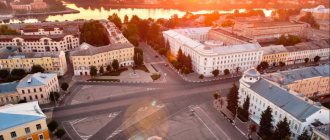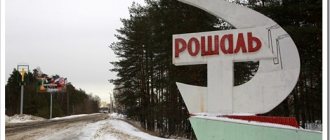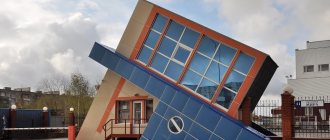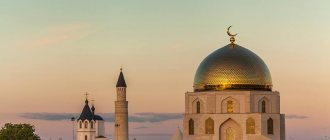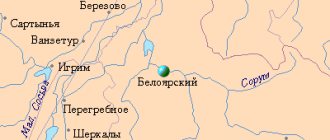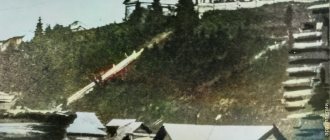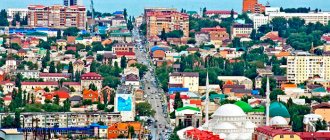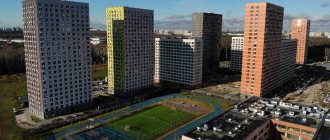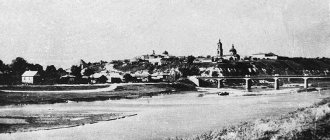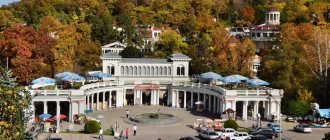City in Chelyabinsk region, Russia
| Nyazepetrovsk Nyazepetrovsk | |
| City [1] | |
| City of Nyazepetrovsk | |
| Flag Coat of arms | |
| Location of Nyazepetrovsk | |
| Nyazepetrovsk Location of Nyazepetrovsk Show map of Russia Nyazepetrovsk Nyazepetrovsk (Chelyabinsk region) Show map of Chelyabinsk region | |
| Coordinates: 56°03'N 59°36'E / 56.050°N W. 59.600° E. / 56.050; 59.600 Coordinates: 56°03'N 59°36'E. / 56.050°N W. 59.600° E. / 56.050; 59,600 | |
| A country | Russia |
| Federal subject | Chelyabinsk region [1] |
| Administrative region | Nyazepetrovsky district [1] |
| Town | Nyazepetrovsk [1] |
| Based | 1747 |
| City status from | 1944 |
| Height | 330 m (1080 ft) |
| population size (2010 Census) [2] | |
| • General | 12 451 |
| • Evaluate (2018) [3] | 11 687 (-6,1 % ) |
| Administrative status | |
| • Capital from | Nyazepetrovsky district [1], Nyazepetrovsk [1] |
| Municipal status | |
| • Municipal district | Nyazepetrovsky municipal district [1] |
| • Urban village | Nyazepetrovskoe urban settlement [1] |
| • Capital from | Nyazepetrovsky municipal district [1], Nyazepetrovsky urban settlement [4] |
| Timezone | UTC+5 (MSK+2[5]) |
| Postal code [6] | 456970, 456971 |
| OKTMO ID | 75644101001 |
Nyazepetrovsk
(Russian: Nyazepetrovsk) is a city and the administrative center of Nyazepetrovsky District in Chelyabinsk Oblast, Russia, located on the Nyazya River (a tributary from Ufa), 150 km (93 mi) northwest of Chelyabinsk, the administrative center of the region. Population: 12,451 (2010 census); [2] 13,405 (2002 census); [7] 17,133 (1989 census). [8]
Links[edit]
Notes[edit]
- ^abcdefghijkl Resolution #161
- ^ a b Federal State Statistics Service (2011). “All-Russian Population Census 2010. Volume 1" [All-Russian Population Census 2010, vol. 1]. All-Russian Population Census 2010 [All-Russian Population Census 2010]
. Federal State Statistics Service. - "26. The size of the permanent population of the Russian Federation by municipalities as of January 1, 2022". Federal State Statistics Service. Retrieved January 23, 2022.
- Federal State Statistics Service. Federal Agency for Technological Regulation and Metrology. No. OK 033-2013 January 1, 2014 “All-Russian classifier of municipal territories. Code 75 644 101 ". (Federal State Statistics Service. Federal Agency for Technological Regulation and Metrology. No. OK 033-2013 dated January 1, 2014. Russian classification of municipal territories. Code 75 644 101.
). - "On the Calculation of Time". Official Internet portal of legal information
. June 3, 2011. Retrieved January 19, 2022. - Post office. Information and computing center of OASU RPO. ( Post office
).
Search for postal service objects ( postal Search for objects
) (in Russian) - ↑
Federal State Statistics Service of Russia (May 21, 2004).
“The population of Russia, the constituent entities of the Russian Federation as part of federal districts, urban settlements, settlements, settlements is 3 thousand or more people” [Population of Russia, its federal districts, federal districts, districts Urban settlements, rural settlements - administrative centers and rural settlements with a population of over 3,000] (XLS). All-Russian Population Census 2002
. - “All-Union Population Census of 1989. The current population of union and autonomous republics, autonomous regions and districts, territories, negative phenomena, urban settlements and rural district centers” [All-Union Population Census of 1989: current population of union and autonomous republics, Autonomous regions and districts , territories, regions, districts, urban settlements and villages performing the functions of district administrative centers. All-Union Population Census of 1989 [All-Union Population Census of 1989]
.
Institute of Demography of the National Research University: Higher School of Economics [Institute of Demography of the National Research University: Higher School of Economics]. 1989 - via Demoscope Weekly
.
Nyazepetrovsk railway
It happens that I return from a long trip by train or car, look at the landscapes outside the window, and there the wide, spacious plain gradually disappears, a forest grows right under my nose, rocky cliffs completely block my view, nature becomes more and more harsh. But I’m having more and more fun: well, yes, the Urals, this is not a plain for you, here the climate is different... And then cars with number 74 begin to appear, and a pleasant feeling of calm and comfort takes over: “Okay, that’s it, I’m home.” It’s still a long way to go to Yekaterinburg, but I’m already in my homeland. This is where my father is from, my friends and relatives live here. Once upon a time, every summer was spent on the Chelyabinsk lakes. And how many Chelyabinsk students study in Yekaterinburg, and Sverdlovsk students in Chelyabinsk. Yes, this is not even a neighbor to the south, but practically a sister! And we have a common history: the mining region, the civil war, industrialization, the forge of victory, “tired cities,” environmental disasters, raider takeovers, “innovations”...
There is one small town in the Chelyabinsk region that is especially close. It's called Nyazepetrovsk. When I speak, someone always asks: “How, how? Dnepropetrovsk? No, the city is in every sense far from the Ukrainian industrial giant. Nyazepetrovsk has a factory history, typical of many cities in the Sverdlovsk region, because it is located near the border of the regions. This is the oldest factory city in the Chelyabinsk region, but it is younger than many of the Sverdlovsk ones. The plant was founded in 1747 by Nizhny Novgorod merchant Pyotr Osokin at the confluence of the Nyazya and Ufa rivers. Elizaveta Petrovna already gave the go-ahead for construction. The plant has a difficult fate; it has been on the verge of closure almost from its foundation. The city itself has long been hanging by a thread, and its residents have become accustomed to a permanent crisis for 270 years. I’ll tell you about the plant next time, and today’s story is about the second city-forming enterprise of the city, now almost deceased - about the railway and the railway district. Photo Hunter ZhD once spoke briefly about the town and the railway. And the photographs there are much better. I again filmed “from the hip” at a gallop across Europe. So get ready, it will make you feel sick.
The city of Nyazepetrovsk, although not very large in population, is very scattered. And all because of the railway station, which turned out to be at a decent distance from the plant during the construction of the West Ural Railway. This road (from Berdyaush to Druzhinino) was built in 1912-1916. on the initiative of this-our-everything D.I. Mendeleev to connect the Bakal mines with the consumer - the factories of the Middle Urals. In Soviet times, Magnitogorsk appeared, and Bakal ore went there. And the West Ural Railway became a sort of secondary bridge between the historical and the new Trans-Siberian Railway. Now part of the Western Railway belongs to the Sverdlovsk Railway, and part to the South Ural Railway. And this section is quite remote, akin to some archaic narrow-gauge railway. Half a century ago they wanted to completely electrify it, but now they are thinking of closing it. SVZhD long ago abandoned its Mikhailovsky Plant, now after Druzhinino there is practically no life. The Berdyaush direction of the South Ural Railway is no better.
1.
Previously, the passenger train “Chusovskaya - Bakal” (+ trailer car to Chelyabinsk) and the suburban “Berdyaush-Druzhinino” ran along this section. On the morning of Railwayman's Day, the only passenger train on the platform was solemnly greeted and escorted by the brass band of the Nyazepetrovsk station. And after that, folk festivities began in the meadow on the other side of the tracks. Now, of course, there is no longer any PDS, no suburban, no folk festivals. However, the practically unused wooden station building was licked and packed with siding before the road owner went around - he, like his colleagues from other roads, is the main specialist in siding, painting and the wide use of languages.
2. Here is a rare traveler. But not a passenger one, but a track meter driven by ChME3-5099.
3. South direction, to Berdyaush. The station and most of the village are on the left side.
4. Northern direction, to Druzhinino. The access roads from the foundry and mechanical plant are also suitable here.
5. Behind the station there is a small “station square” - a connection between the railway area and the city itself, since a regular bus runs from here to the center, perhaps the only transport city route. In the picture is the local performer of the role of Charon - PAZ-3205, waiting for passengers. As I already said, the city is quite scattered; walking to the center is not a long way. 30-40 minutes.
And right away in this photo we see the local flavor - the city is located on very rough terrain, the streets are an endless series of steep ascents and descents, and their direction and even the location of individual houses are often determined by the topography. The photo shows a rare brick apartment building for this part of the city. Here they are exclusively one- and two-story. A separate post is dedicated to typical low-rise buildings at Nyazepetrovsk station. In the meantime, we will continue to inspect the railway part itself.
6. Next begins the territory of the depot and other railway services. This outbuilding (materials and supplies warehouse) looks like a pre-revolutionary one. The idyllic picture with a lawn and idle cows lounging in the shade even looks somehow European.
7. The outbuilding is located not far from the massive locomotive depot building; most likely they are the same age. We must give credit to the railroad - they have no concept of “wilderness” - the head of the road can roll into any “wilderness”, and it will cost someone their job. Therefore, the external gloss, including plastic windows, has been restored even here.
8.
9.
10. Not far from the depot, under the shade of trees, there is a neat monument to those who died in the Second World War. The slabs apparently list only the names of Nyazepetrovsk railway workers.
11. In the context of the monument, the natural Jacob's ladder, located opposite, takes on a mystical meaning.
12. To the south of the depot behind the fence there is a locomotive zone. Just 20 years ago, sleepy black-sided vehicles were waiting in the wings here - the strategic reserve of our Motherland for every firefighter. They didn’t consider themselves decommissioned, because a steam locomotive, when pressed, could even be heated with wood, and these capricious diesel engines of yours... But they stood for too long and in the end went for scrap (especially since in the 90s there was no time for strategic reserves) . Now here the lonely VL10−1516, decommissioned a year ago in Zlatoust, sadly awaits its fate.
13. In its best years, the population of Nyazepetrovsk reached 20 thousand people, but now it is only 13 thousand, so the district center is considered a municipal entity, not a city. The railway part of it is completely a village.
14. Kutasova Street, goes further to the south. Along the road starting behind Kutasov, you can get to the nearby villages of Uraimskie Tomilki and Unkurda.
The Nyazepetrovites are now looking thoughtfully in that direction. Nyazepetrovsk suffered more than all other cities in the Chelyabinsk region in 2009 - unemployment reached a record 20%. In a single-industry town with a half-dead enterprise, this is not surprising. The regional government is concerned about the diversification of production, and they began to talk a lot about the Suroyamsky mining and metallurgical plant, which could appear in the area of the Uraim station near Nyazepetrovsk. Investors were found, Muscovites began to stir - it turned out that the Suroyamskoe deposit is rich in titanium magnetite ores.
Then a confusing fuss began, which is difficult to follow. Who will invest? Back in 2007, the British took up the project, but abandoned it two years later. In 2012, other British people took up the matter, and in May 2014, our new general partners in everything emerged—China. How to mine? There are not enough technologies for ore processing - either the ore is compared with the Kachkanar ore and they are thinking of adopting the experience of the Kachkanar Mining and Processing Plant, or they turn to the Japanese for unique technologies for blast-furnace iron smelting. Who should I sell to? The British wanted to mine titanium, and therefore most likely sell it to Verkhnyaya Salda. Now the Magnitogorsk Iron and Steel Works almost considers the deposit as its own, although the iron content in the ore is quite low - about 14%. The main intrigue is the geological exploration work of 2013, the results of which should decide the fate of the field no later than 2014. They held their breath in Magnitogorsk and Chelyabinsk, in Verkhnyaya Salda and Nizhny Tagil, in Moscow and London, and only the Nyazepetrovites scratched their heads with doubt: they promised us so much of everything, but they closed the clinic. Over the years, they have become accustomed to complaining about the disastrous economy of the area and, with an ironic grin, as a consequence and as a counterbalance, to be consoled by the excellent ecology. Now they are promised to exchange one for another, but they already doubt - maybe the environment really is better? And we’ll get by somehow, don’t get used to it...
For now, we will leave the world of big numbers and wallets and look at the street - typical of Nyazepetrovsk, quiet and entirely wooden. Who would have thought that even here, behind the overgrown front gardens, dramas no worse than Shakespeare’s are played out in our time. Let's get closer to the monument in the center.
15. Ivan Prokopievich Kutasov - one of those restless Nyazepetrovites with burning eyes, who were shot for an overly active civic position after the capture of the city by Kolchak’s troops in 1919. Previously, a black bayonet stuck out from the top of the obelisk. Then someone broke it off and cleaned it up.
16. The parquet plant (or rather, the parquet shop of the Nyazepetrovsk timber industry enterprise) was founded in 1980, but did not manage to reach its design capacity by the time of restructuring. The noble birch, which was the main raw material for parquet, became unnecessary in the 1990s, and there was not enough pine. The parquet shop began producing slats, mops and pegs for tying tomatoes. Now in Nyazepetrovsk timber processing is not very developed, but logging has become one of the main industries. So the parquet shop, as far as I know, has turned into a banal sawmill. In the foreground is a sawdust bin; there used to be two of them.
17. Here, of course, you can laugh and come up with a funny caption yourself, but for some reason it’s funnier for me
18. Now let's go to the center of the village. Here is a playground at the village kindergarten of the Brezhnev era:
A kindergarten is like a kindergarten. Functional and cute, especially compared to this spartan playpen in the middle of the street:
19.
20. The house is not as curious as the structure of its courtyard buildings. The sheds and the toilet seem to be swaggering in front of each other.
21. By the way, about the sheds. In many courtyards there is a special wooden outbuilding with several compartments with separate doors. Compensation for the lack of a barn.
22. You, of course, noticed the decor in the previous photo. Here he is closer. By the way, the decor is “standard”. I met him in several courtyards.
23. It feels like a railway area. A real railway worker knows how to install such things in the farm.
24. By the way, about railway workers. This is how the railway workers settled down in Nyazepetrovsk. The railway order is touchingly buried in lilacs and apple trees. On the left, at the end of the building, there used to be an entrance to the living quarters of P.Ch. It is possible that the building is still of dual use.
25. Some people prefer cheap and cheerful siding. But all year round. This is a former ambulance station.
26. This wonderful pre-war house is a railway communications center. You won't believe it, but the building is abandoned. It underwent a good overhaul and after that the signalmen were unexpectedly moved to another room - closer to the station.
28. An orphaned annex - a pharmacy, is now closed as unprofitable (the nearest one is now several kilometers away - in the city). And apparently the same fate awaits her that befell the clinic to which she was attached.
29. Surprisingly, the most boring building in the entire district is the children's art school.
30. Local shop. The lens caught a store with the enticing name “Fortune”, but in fact, most often in Nyazepetrovsk there are stores with the no less promising name “Fairy Tale”.
31. We go to the center of the railway village - the center of public life here is called the “patch”. Right in the center is the pre-war clubhouse. There is a memorial plaque on the building: “In 1941, this building housed the headquarters of the 65th Marine Brigade, which was replenished with communists and Komsomol members of the Nyazepetrovsk region who voluntarily joined its ranks.” The brigade of the Nyazepetrovsk formation lost almost half of its personnel in the not very successful Medvezhyegorsk offensive operation of 1942. Their names must have been on the obelisk that we saw near the station.
In addition, during the war, Nyazepetrovsk residents produced sea mines at their factory, organized an evacuation hospital (No. 3878) in the building of school No. 1, and also chipped in for a combat aircraft. Unfortunately, I couldn’t find out what kind of car it was and where it fought.
32. To the left of the “patch” is a sports club with a predictable name.
33. Arithmetic test: how many teams can play football at the same time on the Lokomotiv field? And if there is only one ball...
34. To the right of the “patch”. Russian Post is hiding in the bushes.
35. German Gref is waiting for you where you don’t expect him at all
36. Scenic water tower
37. We approached school number 27 - despite the number, this is one of only three operating schools in Nyazepetrovsk. Located on Polzunov Street. This is a late Soviet school building with the main entrance.
38. And it was attached to a pre-war building:
39. An interesting mural on the back wall of a school gym that motivates children to take up sports.
Walt Disney - Soyuzmultfilm 2:2. A kangaroo (or a baby fox?) could tip the scales in someone's favor, but remained unidentified.
40. Perspective of one of the streets
41. Last time we paid a lot of attention to apartment buildings. But most of the village are private houses, usually five-walled with a courtyard. Here is a nice and neat example of small architecture.
42. Houses with 2-3 apartments are a source of fascinating discussions between neighbors and generally a funny precedent that gives rise to the following design solutions:
43. Everyone looks after their half as if it were a separate house.
44. Someone figured out that the most common street name in Russia is Lesnaya Street, and not Lenin Street, as many people think. And here we are on Nyazepetrovskaya Lesnaya. The street stretches along the forest, on the mountain. And the wealthiest residents of Nyazepetrovsk chose it (simply, the street was built late - perestroika and later).
45. You have probably already noticed how deserted the streets are. And it's Saturday evening. But this is partly due to the ongoing battle for the harvest - planting is actively underway, everyone is in their own plots of land (and they don’t yet know what a lousy summer is coming). The fencing of many plots has one collapsible section - for tractor entry into the beds. May is the peak month for hired tractor drivers.
46. Nyazepetrovskoe reservoir on the Ufa River - I’ll tell you a secret, one of the places considered fishing by avid Ekaterinburg fishermen. Specifically for fish and specifically for avid people, and not just to have fun with perches on the weekend.
The father of Russian democracy, B. N. Yeltsin, had a hand in the construction. The reservoir was filled in 1976, and one of its main purposes is water for you, my dear Yekaterinburg. Yes, this is where you drink from, and this is where your enterprises “drink” from. True, only during the drought period, but this has been stable every summer since 2010 (although this summer the heavenly abysses are pouring more than enough down the neck). Four Ekaterinburg water intakes - Verkhne-Makarovskoye, Volchikhinskoye, Revdinskoye and Novo-Maryinskoye reservoirs - with the growth of the city already in the 1960s. could not provide a reliable reserve, so they built a dam in Ufa. Naive idiots - they did not understand that in 40 years two neighboring regions would be like two not very friendly states - jealously counting each other's every penny and threatening sanctions.
The Chelyabinsk governor Yurevich, of course, burned with napalm, demanding to pay “for last year’s snow” (and he is generally an interesting person) - why are these parasites, they say, attached to our water? It was not enough for him that the Yekaterinburg MUP Vodokanal employed Nyazepetrovsk residents and paid taxes to the city budget. But the Yekaterinburg authorities did not lag behind: how long, brothers, will we choke on someone else’s filthy water? Buy yours, Sverdlovsk. Glory to Rossel! And they decided to flood a couple of their natural parks for 37 billion rubles in spite of the Chelyabinsk residents, just to refuse “imports”.
Well, Nyazepetrovsk, left without a railway and with a half-functioning plant, bashfully offers everything it has - its natural resources: forest and water. And, you see, no one wants to take this.
47. The lock of the Nyazepetrovsky reservoir is larger. A regime object, by the way. I'm filming through the fence. A few years ago it was possible to go onto the dam without restrictions, but now it is prohibited.
48. We go down the mountain to the Ufa River - below the dam. Below are mechanical repair shops.
49. Let's estimate the dam from below.
50. Ufa at the dam.
51. And here he is, the Yekaterinburg MUP “Vodokanal”. Slogans on the building: “We give water”, “Water gives life”. Vodokanal hints at its high mission on Earth.
52. Bridge over Ufa, behind which the urban part of Nyazepetrovsk gradually begins.
53. The confluence of two rivers - the Ufa and Nyazi, which gave the city its name. Nyazya is a form of the Bashkir “Naza” - “spruce”. Although incurable romantics traditionally associate the name of the river with the name of the girl, that’s why they are incurable. As we see, there is really a lot of oil here. The forest on this mountain has relatively recently recovered after a large fire that occurred about 30 years ago.
54.
55. In my opinion, one of the most beautiful places in the area. It’s a shame that I’m such a lousy photographer and can’t convey the atmosphere. I hope that someday a real artist will come here.
56. Let's take another look at Ufa - from the bridge.
57. Once upon a time, at a very innocent age, I asked in this place: “What does RMM mean?” My Tagil grandfather was the first to find an answer. "Guys, we're in Miami!" - he exclaimed cheerfully.
58. Witty...
59. Well, for a snack - here is this victim of provincial marketing - with two possible fishing outcomes. This concludes the lengthy story about the railway part of Nyazepetrovsk.
Next, let's go to the city itself.
